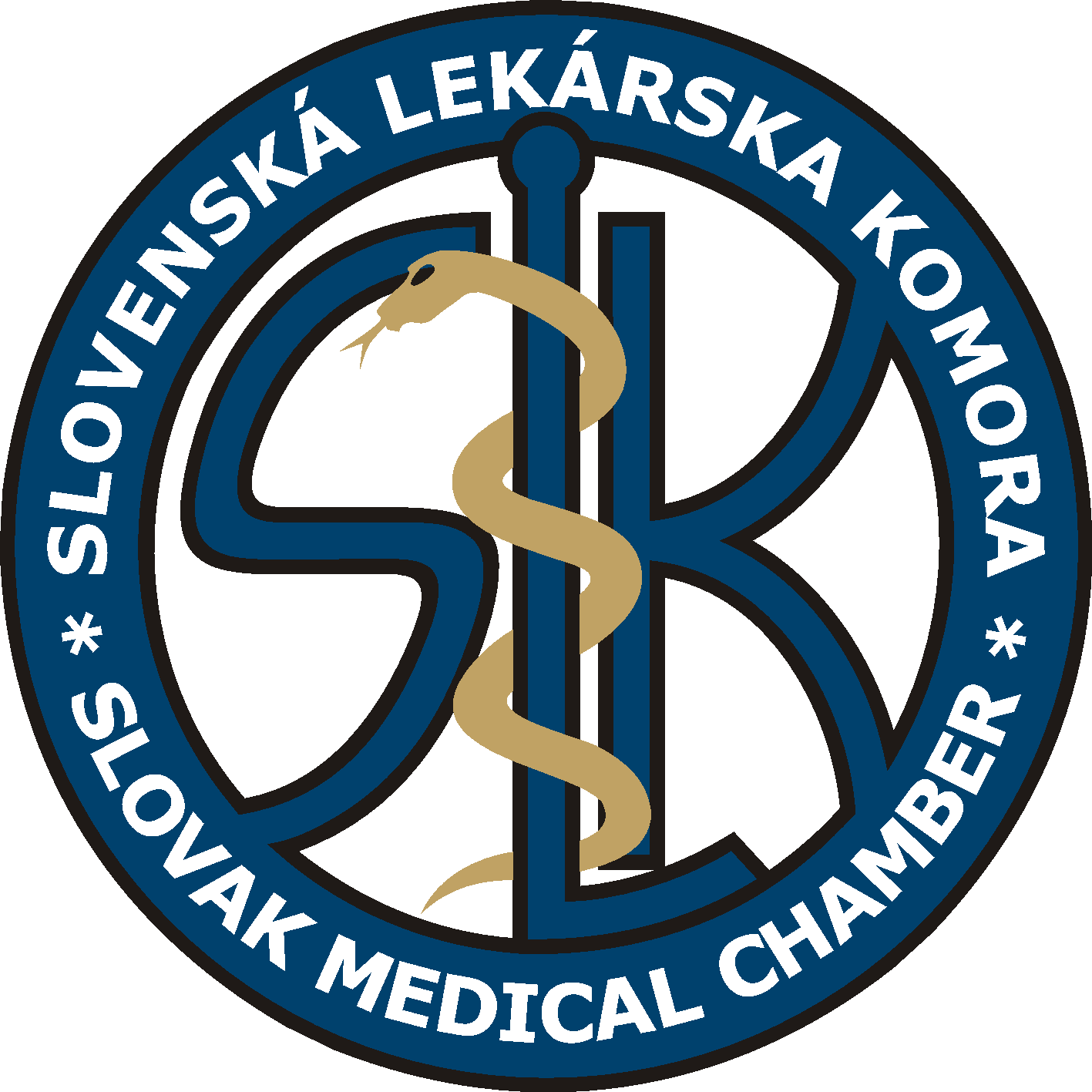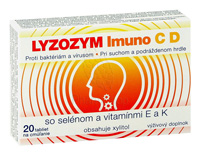Manuscript preparation
Manuscripts should be compliant with the requirements of the Lekársky obzor journal. Its procedures follow the Recommendations for the Conduct, Reporting, Editing, and Publication of Scholarly Work in Medical Journals). These recommendations are updated regularly by the International Committee of Medical Journal Editors, available at http://www.icmje.org/recommendations/browse/manuscript-preparation/preparing-for-submission.html).
Guidelines for manuscript processing
The Lekársky obzor journal requires authors to adhere to internationally accepted standards aimed at improving the quality of the presented results. These recommendations help authors describe the study in detail sufficient enough for it to be assessed by editors, peer-reviewers, readers and other researchers who evaluate medical literature. Randomized studies are required to follow the recommendations of CONSORT- CONsolidated Standards Of Reporting Trials (http://www.consort-statement.org/), observational studies follow the recommendations of STROBE - STrengthening the Reporting of OBservational studies in Epidemiology (https://strobe-statement.org/index.php?id=strobe-home), systematic reviews and meta-analyses follow the recommendations of PRISMA - Preferred Reporting Items for Systematic Reviews and Meta-Analyses (http://prisma-statement.org/), diagnostic and prognostic studies follow the recommendations of STARD - STAndards for the Reporting of Diagnostic Accuracy (www.stard-statement.org/), and casuistics follow the recommendations of CARE - CAse REports (http://www.care-statement.org/). Other suitable sources for standard recommendations are available on the website of EQUATOR - Enhancing the QUAlity and Transparency Of Health Research (http://www.equator-network.org/ ) and NLM’s Research Reporting Guidelines and Initiatives (https://www.nlm.nih.gov/services/research_report_guide.html).
Title page
The title page contains the Slovak and English title of the paper, full first and last names of all the authors, and full names of their workplaces. The title of the paper should be specific, concise, and not exceed 40 characters. All of the authors’ academic titles are to be stated. The name of the author designated for correspondence purposes has to be clearly stated, together with their e-mail address used for prospective communication. This person shall be responsible for future communication on behalf of the manuscript. The title page can also contain the author’s statement that the opinions expressed in the article are their own and do not represent the official standpoint of the institution. The title page should also contain a reference to the source of any kind of support (grants, equipment for the study, etc.), if applicable.
Corresponding author
A corresponding author is an author responsible for communicating with the journal during the submission, evaluation, and publication of the manuscript, as well as addressing administrative tasks (e.g. details about the authorship, approval by the ethics committee). The designated author should be also available after the publication for addressing the journal’s requests.
Authorship of the paper
For authorship designation purposes, the Lekársky obzor journal follows the recommendations of the International Committee of Medical Journal Editors (http://www.icmje.org). All those listed among the authors are required to meet all the basic authorship criteria. Others should not be listed among them. If they have contributed in any way, they can be thanked at the end of the article. If there changes to be made to the authorship before the publication of the article (adding/deleting authors, changing the order), it is necessary to submit a written request to the journal’s editor in chief. The request must contain reasoning for the changes and approval of all the authors, as well as the approval of the author in question. Changes to the article after publication are possible only under special circumstances.
Basic authorship criteria
The International Committee of Medical Journal Editors recommends the authorship be based on the following four criteria, i.e. the authors of the paper are those who have
- significantly contributed to the concept or design of the paper, or to data gathering, analysis or interpretation;
- compiled the paper or critically re-evaluated the intellectual content;
- approved the final version for publication;
- agreed to take full responsibility for every aspect of the work in order to make sure that questions about the accuracy or integrity of any part of the work are addressed.
It is the authors’ collective responsibility (not of the Lekársky obzor journal) to determine whether all the listed authors meet all four authorship criteria. It is not for the editors of the Lekársky obzor journal to determine who does or does not meet the criteria.
Interventional clinical trials
A clinical trial is any kind of research project which assigns an intervention to people or groups of people in order to study the relationships between the intervention and the result. Interventions relate to health and modify biomedical or health results. New treatment interventions (medicines, surgical procedures, medical equipment, and nutritional interventions) are being tested during interventional clinical trials. If a new kind of medicine is being tested, it is considered a clinical trial. Based on the recommendations of ICMJE, the Lekársky obzor journal requires interventional clinical trials to be registered in public registries. Registration must be completed prior to the inclusion of the first patient. Clinical trials can be publicly registered in the WHO registry (www.who.int/ictrp/network/primary/en/index.html) or at ClinicalTrials.gov. These registries are available to the public free of charge and are open to all potential applicants. It is necessary to state the assigned registration number at the end of the abstract.
Abstract (paper summary)
The abstract has to be brief and on point. It has to be submitted both in Slovak and English. The abstract has to accurately reflect the content of the article; information in the abstract has to be consistent with the content of the article. Abstracts of original papers, meta-analyses should be structured into several sections – introduction, patients/material and methods, results and conclusion. Introduction – briefly, using two or three sentences, state the knowledge, or lack thereof, which the authors used as a starting point when designing the concept of the paper. Patients/Material– using exact numerical values characterize the research and control pool (number, age, sex, researched samples, numerical values). Methods – concisely define the applied methods, equipment and procedures. Patients/material and methods can be joined if necessary. Results – present the most important specific results and the dispersion of statistical values. Conclusion – clearly state new knowledge introduced by the paper, its significance for praxis or the progress of science. The abstract of an original paper or meta-analysis should not exceed 250 words. Case report abstracts should be unstructured. The abstract should briefly state the aim of the paper, the main results, and conclusions. It should not exceed 200 words. In the case of a systematic review, the abstract should introduce the most significant piece of knowledge stated in the report and not exceed 200 words. Abstracts are not allowed to contain abbreviations or citations, they should concisely describe the topic of the study and measurements conducted, as well as introduce only the most relevant results and the conclusion of the study, what the authors found out. Manuscripts concluding that “the authors have confirmed results of other authors” are undesirable. Scientific and clinical studies cannot simply repeat already known facts. If a paper has been assigned a clinical trial registration number, it has to be stated at the end of the abstract.
Keywords
At the end of the abstract, keywords (5 – 6) are to be listed for indexing purposes. Keywords should be in accordance with the current MeSH version (https://meshb.nlm.nih.gov/search).
The extent of the paper
Review articles, meta-analyses should not exceed 12 pages, original papers 8-10 pages, case reports 7 pages.
Original papers can be written in English, Slovak, or Czech. We recommend opting for publication in English, as it greatly increases the probability of being cited abroad.
The structure of original papers consists of:
- The introduction – consists of 2 – 3 concise sentences and introduces knowledge, or lack thereof, the authors used as a starting point when designing the concept of the paper.
- Patients/material and methods have to precisely define why the study was carried out in a particular way. They have to exactly and numerically characterize the research and control pools (number, age, sex, researched samples, numerical values), exactly describe the methods used (equipment description) so that others are able to reproduce the results. If methods that are already known are being used, citation links have to be presented. It is necessary to precisely describe all the chemicals and medicaments used, including the generic name, dosage, and administration. Authors should use neutral, exact and respectful language when describing the participants of the study and refrain from using terminology that could scar the participants. It is necessary to state whether an informed approval was granted. This section should list all the statistical methods that were used. Statistical tests have to be described in sufficient detail so that the readers are able to verify if they are correct. It is necessary to describe the type of software that was used for statistical analysis and its version. This section should also contain a statement that the research was conducted in accordance with the Declaration of Helsinki and approved by the inspection authority (e.g. the ethics committee) in case of human or animal studies.
- Results are introduced in the text, logically and without comments. They contain the most significant and specific numerical results, findings and statistical data. The data in the text should not be repeated in the tables or charts. In the results section, words like “random” (which would lead to randomization) or “significant” should be avoided if unproven.
Statistical data
Each submitted article containing statistical data is revised by an editor who will ask the author to provide a complete data set if it is not present in the manuscript to verify its credibility. The authors should be prepared to provide access to this data for an independent analysis. Data submitted to our editorial office that is more complex is further revised either by the department of bio-statistical analysis of the Slovak University of Medicine or by an external expert from the Faculty of Medicine at the Comenius University in Bratislava.
- Discussion. Authors focus on comparing their own results with data in the literature, emphasizing new and more important findings the paper introduces. It is advisable to state the limits of the presented study within the discussion section.
- In the Conclusion section, it is necessary to state new findings the paper introduces, their significance for the praxis and the progress of science. The conclusion should avoid statements not supported by the paper.
References
Works cited in the References section are to be listed alphabetically. The referenced literature should be easily available to readers, link only to published works (no lectures, dissertations, or personal messages) and the summary should be without citations. State the first three authors only, others et al. Cite only literature the author refers to in the text. Referring to a citation in the text is done by putting the sequence number of the cited source in brackets at the end of a sentence or paragraph. References should be numbered by an Arabic numeral. Journal titles should be shortened according to the MEDLINE style (https://www.ncbi.nlm.nih.gov/nlmcatalog/journals). It is advisable to verify the citation using, for example, an electronic bibliographic source (PubMed) in order for it to be precise.
According to STN ISO 690 (01 0197), the following style of citation is to be applied:
- from a book: last name of the author/s (upper case), comma, abbreviation of the first name, period, colon, book title italicized, period, edition number, period, place of publication, colon, publisher, comma, publication year, comma, location in the text (pages from - to) or the total number of pages, period. Example: JUNAS, J.: Lekári a spoločnosť v 19. storočí na Slovensku. Martin: Osveta, 1990, pp. 76-80 (or 386 p.).
- from a journal: last name of the author/s (upper case), comma, abbreviation of the first name, period, colon, article title, period, international abbreviation of the journal-title italicized, comma, volume, comma, year of publication, comma, number (No.), comma, pages from – to (pp.), period. Example: PETROVIČOVÁ, A., TIETZOVÁ, J.: Enterálne vírusové infekcie. Lek Obz, 41, 1991, No. 8, p. 434-452.
- from a website: it is necessary to state the full URL address and date the link was last used. Other information is required, as well, if available (DOI, names of the authors, dates, references to source publications, etc.). Web links are to be included in the list of references.
Tables
Tables are to be numbered in the text in round brackets based on their sequence (Tab. 1). Place the tables into the text. The table description should be brief; data in a table should not repeat results from the text. All the abbreviations and symbols are to be listed in notes placed under a line or in the text that relates to the table. If a table from another source is being used, it is necessary to acquire written approval and present the source in the text.
Charts and pictures
State the name of the commonly available software that was used to create computer-generated charts (Power-Point is recommended). The software has to be compatible with the current version of Windows. Titles of the tables and charts have to be in Slovak and English, presented in the text in round brackets (Fig.1). Descriptions of pictures and charts should be brief and provided at the end of the manuscript, not under the pictures or charts themselves. All the symbols or abbreviations in the pictures or charts have to be explained in the description. Pictures are to be submitted in the appropriate format (TIFF, JPG or PNG) and in high resolution (at least 600 dpi). Pictures cannot contain names or any other personal data of patients; any kind of data that could identify a patient (eyes, tattoos, etc.) has to be covered. If charts and pictures from another source are being used, it is necessary to acquire written approval from the copyright holder and provide the source in the text.
Measurement units
Measurements of length, height, weight, and volume are presented in metric units (meters, kilograms or liters). Temperatures should be in Celsius, blood pressure in millimeters of mercury. Other measurements can be presented in the International System of Units (SI).
Abbreviations
Abbreviations need to be explained after their first usage. Don’t use them in titles, at the beginning or the end of a sentence, try to limit their usage, in general. Don’t use abbreviations in the summary. Foreign words have to follow the rules of grammar and the dictionary of foreign words. Use as few foreign words and passive forms as possible. Each manuscript will undergo editorial corrections.
Acknowledgments
At the end of the article, it is possible to thank the individuals (contributors) who have helped compile the paper. Contributors are all the individuals who do not meet the four requirements of authorship but have contributed to the work in some way (linguistic revision, technical revision of the manuscript, etc.). When acknowledging contributors, the author is required to have written approval from all the individuals.
Submitting manuscripts
Articles are to be submitted in electronic form, in Slovak, Czech or English language. Send the text by e-mail (
Correcting and retracting published papers
Correcting published papers
If mistakes are found in a published paper, it is necessary to correct them. The author contacts the journal editor and informs them about the uncovered mistakes as soon as possible. If a mistake is found prior to publication in the journal, the author notifies the editor immediately. If the article has been already published in one of the journal volumes, a correction notice will be printed in the next volume. The online version will also feature the correction and an erratum will be published. Correction notifications are indexed and linked to original entries.
Retracting published papers
If an editor finds out that a published work contains unreliable or artificially created data, that a paper is a plagiarism, it has been duplicated or does not meet ethical criteria, the editor will retract the paper from circulation. Each paper retracted from circulation must contain the reason for retraction. The retraction notice will be published in the next printed volume and in the online version. The original text will remain available, although the text can be retracted in its entirety in some illicit cases. Retraction notifications are indexed and linked to original entries.
Data sharing
Sharing of complete data used for the article results enables its re-usage, increases the research credibility and allows for verification.
Data sharing rules of the Lekársky obzor journal
The Lekársky obzor journal expects the data used for research and featured in the articles to be publicly available (on public a data repository) and accessible as soon as possible. The editorial office can request this data during the decision-making process. If the data is sensitive, it must be shared through a controlled access point to ensure the anonymity and privacy of the participants. It is necessary to make as much of the complete data (study results, statistics, pictures, tables, texts) accessible, as possible, in order for the results to be reproducible. Data should be available in standard formats, e.g. .png, .jpg, .txt, .doc, .csv, .xls, .avi, etc. In the case of clinical data, it is possible to use the repository registry https://www.re3data.org/ or repositories like https://datadryad.org, https://zenodo.org. Authors can publish a data availability statement in their preferred format and link it to the repository of their choice. This statement (Data Availability Statement) will be published in the work of the author(s).
In the case of a clinical trial, based on the International Committee of Medical Journal Editors (ICMJE), the Lekársky obzor journal requires the registration of clinical trials to include a data sharing plan, as well - http://www.icmje.org/recommendations/browse/publishing-and-editorial-issues/clinical-trial-registration.html#two. It is also necessary to cite all the data used for the article in the references.
When requesting access to the data, it is necessary to contact the author on his e-mail address presented in the Correspondence Address section. If the author doesn’t reply, it is necessary to contact the journal office which will evaluate the request, notify the author and eventually arrange the publication of the requested data.



